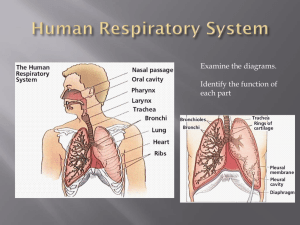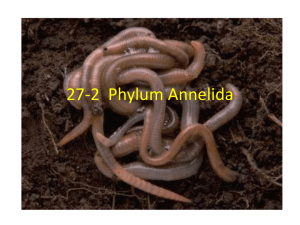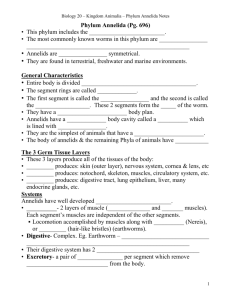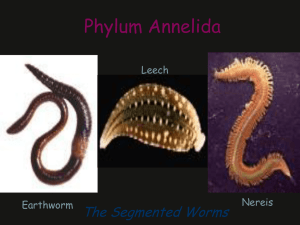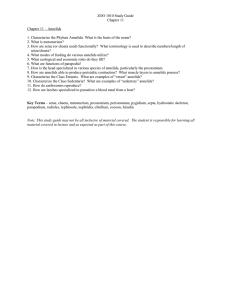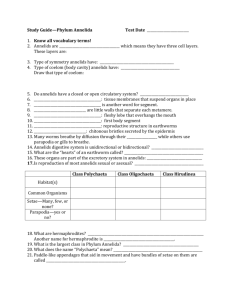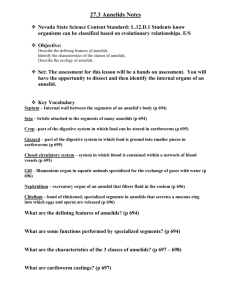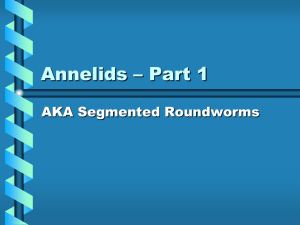Phylum Annelida - ScienceCo
advertisement
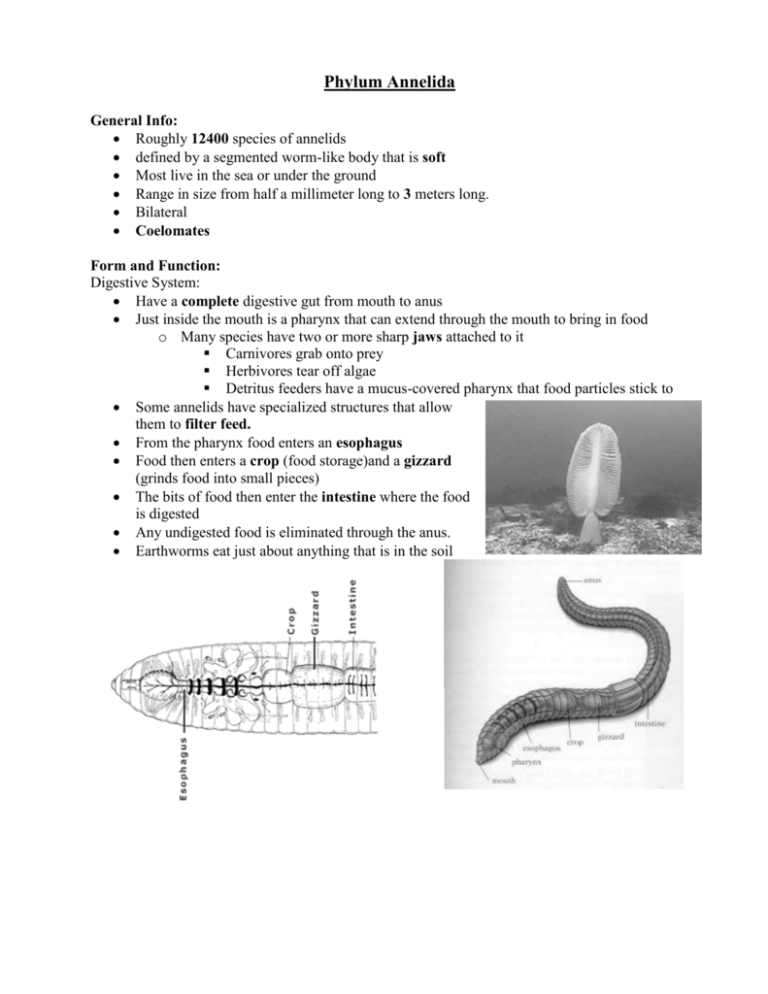
Phylum Annelida General Info: Roughly 12400 species of annelids defined by a segmented worm-like body that is soft Most live in the sea or under the ground Range in size from half a millimeter long to 3 meters long. Bilateral Coelomates Form and Function: Digestive System: Have a complete digestive gut from mouth to anus Just inside the mouth is a pharynx that can extend through the mouth to bring in food o Many species have two or more sharp jaws attached to it Carnivores grab onto prey Herbivores tear off algae Detritus feeders have a mucus-covered pharynx that food particles stick to Some annelids have specialized structures that allow them to filter feed. From the pharynx food enters an esophagus Food then enters a crop (food storage)and a gizzard (grinds food into small pieces) The bits of food then enter the intestine where the food is digested Any undigested food is eliminated through the anus. Earthworms eat just about anything that is in the soil Respiratory System: Aquatic species often breath through gills Terrestrial annelids can perform gas exchange through their skin. The skin must stay moist in order for this exchange to occur. o Terrestrial annelids secrete a cuticle that protects from drying out. Circulatory System: Closed circulatory system of two main blood vessels that run the length of the body Blood moves towards the head of the worm in the top (dorsal) vessel and towards the tail of the worm in the bottom (ventral) vessel. There are rings of blood vessels that connect the two main vessels that are similar to hearts. They contract rhythmically to pump blood throughout the body. In some annelids that blood is pushed through the body by muscle contractions during movement. Excretory System: Metabolic wastes are excreted through specialized structures called nephridia. There is a pair of nephridia in each body segment Nervous System: Well-developed nervous system The brain sits above the gut in the head region Two large nerves pass around the gut to a pair of ganglia located beneath the gut. From these ganglia, a ventral nerve cord runs the entire length of the body. There are smaller ganglia in each section where smaller nerves attach to the main cord. Other annelids have further specialized sensory structures such as sensory tentacles, statocysts (balance/orientation), chemical receptors, or simple eyes that can detect light. Locomotion: Two major groups of muscles in their body walls o Longitudinal muscles run from front to rear. When they contract, the worm gets shorter o Circular muscles run in circles around the body of the worm. When these muscles contract, the worm gets skinnier Reproduction: Some annelids can reproduce asexually by budding but most reproduce sexually Some species have separate sexes and fertilization occurs externally. The female releases an egg into the open and the male releases sperm. Other annelids are hermaphrodites that undergo internal fertilization. o Two worms pair up and there is a two-way exchange of sperm o The worm has a segment called a clitellum which secretes a mucus ring in which the eggs are fertilized with sperm Class Polychaeta: Polychaeta means many bristles Characterized by two paddle-like appendages on each segment that have bristles on the ends. Class Oligochaeta: Earthworms and relatives. Smaller and fewer bristles on the ventral side provide anchorage for the worm Most live in soil and freshwater Class Hirudinea: Contains leeches. Mostly tropical External parasites that feed on the blood of their hosts Some leech species are carnivorous and they feed on smaller soft-bodied animals. o They either suck the body parts from the animal or eat it whole.
